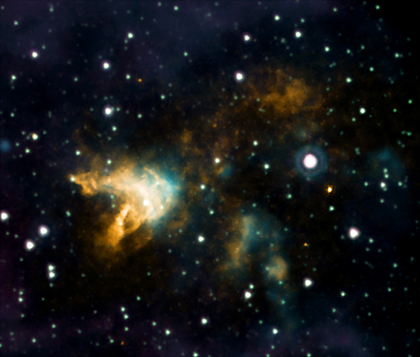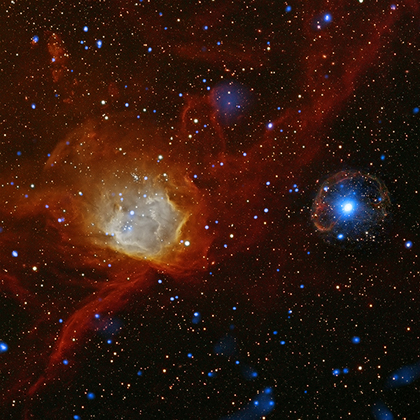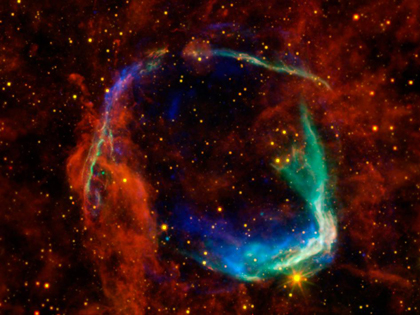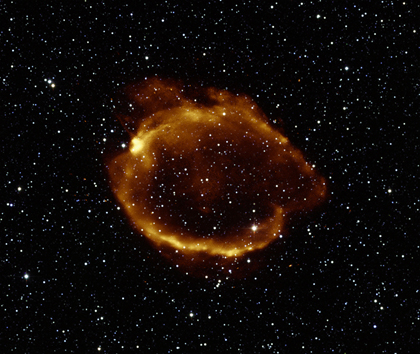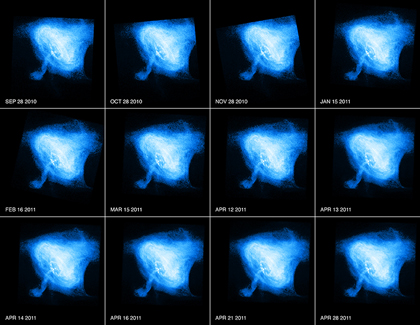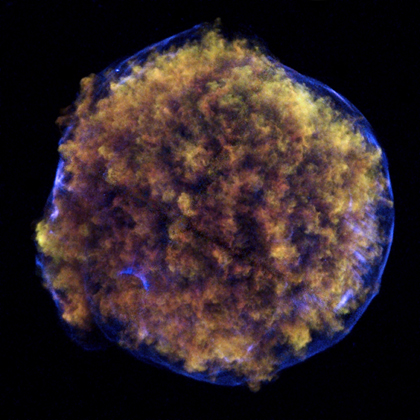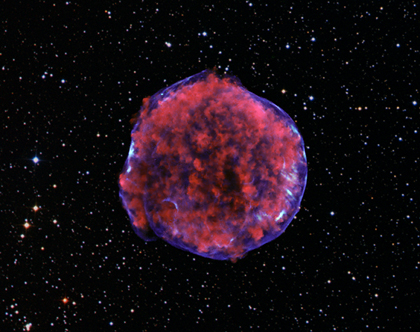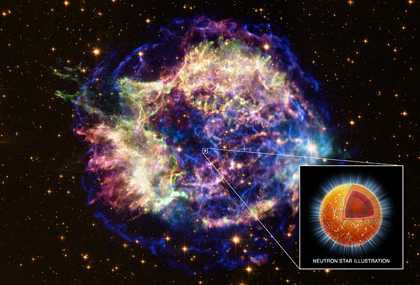Supernovas & Supernova Remnants
Supernovas on Ice
Submitted by chandra on Wed, 2012-01-25 17:24Sometimes it's hard to get the connection between what happens far away in space and things that you can touch and feel on the ground. Of course, the science of "out there" is intertwined with the science of "right here." A new module for teachers in our Chandra Education section demonstrates that perfectly.

Dr. Gisela Dreschhoff
Since the 1970s, Dr. Gisela Dreschhoff has traveled to Antarctica and Greenland to study the effects from space imprinted on deep ice cores extracted from the ground. While she was initially interested in historic energetic events from the Sun, she has also looked at her data to see if some of the most famous supernova explosions – including Kepler, Tycho, and Cassiopeia A – have also left their mark in the ice.
Celestial Bauble Intrigues Astronomers
Submitted by chandra on Tue, 2011-12-20 11:59With the holiday season in full swing, a new image from an assembly of telescopes has revealed an unusual cosmic ornament. Data from NASA's Chandra X-ray Observatory and ESA's XMM-Newton have been combined to discover a young pulsar in the remains of a supernova located in the Small Magellanic Cloud, or SMC. This would be the first definite time a pulsar, a spinning, ultra-dense star, has been found in a supernova remnant in the SMC, a small satellite galaxy to the Milky Way.
All Eyes on Oldest Recorded Supernova
Submitted by chandra on Thu, 2011-10-27 12:25This image combines data from four different space telescopes to create a multi-wavelength view of all that remains of the oldest documented example of a supernova, called RCW 86. The Chinese witnessed the event in 185 A.D., documenting a mysterious "guest star" that remained in the sky for eight months. X-ray images from NASA's Chandra X-ray Observatory and the European Space Agency's XMM-Newton Observatory are combined to form the blue and green colors in the image. The X-rays show the interstellar gas that has been heated to millions of degrees by the passage of the shock wave from the supernova.
A Middle-Aged Supernova Remnant
Submitted by chandra on Wed, 2011-10-12 08:52G299.2-2.9 is an intriguing supernova remnant found about 16,000 light years away in the Milky Way galaxy . Evidence points to G299.2-2.9 being the remains of a Type Ia supernova, where a white dwarf has grown sufficiently massive to cause a thermonuclear explosion. Because it is older than most supernova remnants caused by these explosions, at an age of about 4500 years, G299.2-2.9 provides astronomers with an excellent opportunity to study how these objects evolve over time. It also provides a probe of the Type Ia supernova explosion that produced this structure.
The Crab in Action & The Case of The Dog That Did Not Bark
Submitted by chandra on Wed, 2011-05-11 16:23A new movie from NASA's Chandra X-ray Observatory shows a sequence of Chandra images of the Crab Nebula, taken over an interval of seven months. Dramatic variations are seen, including the expansion of a ring of X-ray emission around the pulsar (white dot near center) and changes in the knots within this ring.
NASA'S Chandra Finds New Evidence on Origin of Supernovas
Submitted by chandra on Tue, 2011-04-26 13:40This Chandra image of the Tycho supernova remnant contains new evidence for what triggered the original supernova explosion. Tycho was formed by a Type Ia supernova, a category of stellar explosion used in measuring astronomical distances because of their reliable brightness. In the lower left region of Tycho is a blue arc of X-ray emission. Several lines of evidence support the conclusion that this arc is due to a shock wave created when a white dwarf exploded and blew material off the surface of a nearby companion star. This supports one popular scenario for the trigger of a Type Ia supernova. Understanding the origin of Type Ia supernovas is important because they have been used to determine that the Universe is expanding at an accelerating rate
Exploding Stars and Stripes
Submitted by chandra on Thu, 2011-03-24 10:00This image comes from a very deep Chandra observation of the Tycho supernova remnant, produced by the explosion of a white dwarf star in our Galaxy. Low-energy X-rays (red) in the image show expanding debris from the supernova explosion and high energy X-rays (blue) show the blast wave, a shell of extremely energetic electrons . These high-energy X-rays show a pattern of X-ray "stripes" never previously seen in a supernova remnant. By rolling the mouse over the color image above, two regions containing stripes in the high energy image can be seen superimposed on the full color version. Some of the brightest stripes can also directly be seen in the full color image, on the right side of the remnant pointing from the outer rim to the interior. The stellar background is from the Digitized Sky Survey and only shows stars outside the remnant.
Chandra Finds Superfluid in Neutron Star's Core
Submitted by chandra on Wed, 2011-02-23 16:05This composite image shows a beautiful X-ray and optical view of Cassiopeia A (Cas A), a supernova remnant located in our Galaxy about 11,000 light years away. These are the remains of a massive star that exploded about 330 years ago, as measured in Earth's time frame. X-rays from Chandra are shown in red, green and blue along with optical data from Hubble in gold.
Supernova Bubble Resembles Holiday Ornament
Submitted by chandra on Tue, 2010-12-14 12:34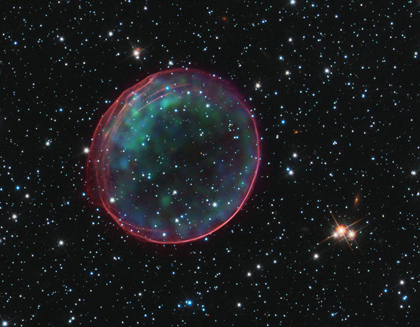
This colorful creation was made by combining data from two of NASA's Great Observatories. Optical data of SNR 0509-67.5 and its accompanying star field, taken with the Hubble Space Telescope, are composited with X-ray energies from the Chandra X-ray Observatory. The result shows soft green and blue hues of heated material from the X-ray data surrounded by the glowing pink optical shell which shows the ambient gas being shocked by the expanding blast wave from the supernova. Ripples in the shell's appearance coincide with brighter areas of the X-ray data.
http://www.chandra.harvard.edu/photo/2010/snr0509/
-Megan Watzke
Pages
Please note this is a moderated blog. No pornography, spam, profanity or discriminatory remarks are allowed. No personal attacks are allowed. Users should stay on topic to keep it relevant for the readers.
Read the privacy statement

